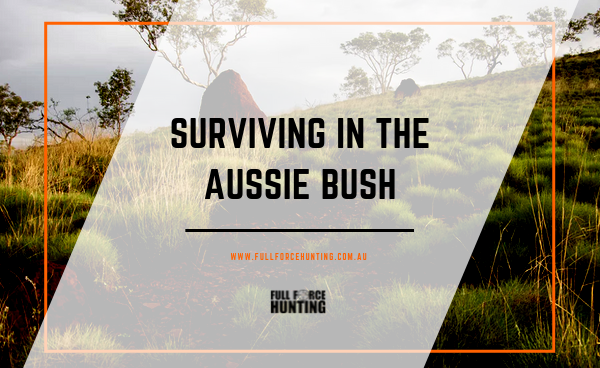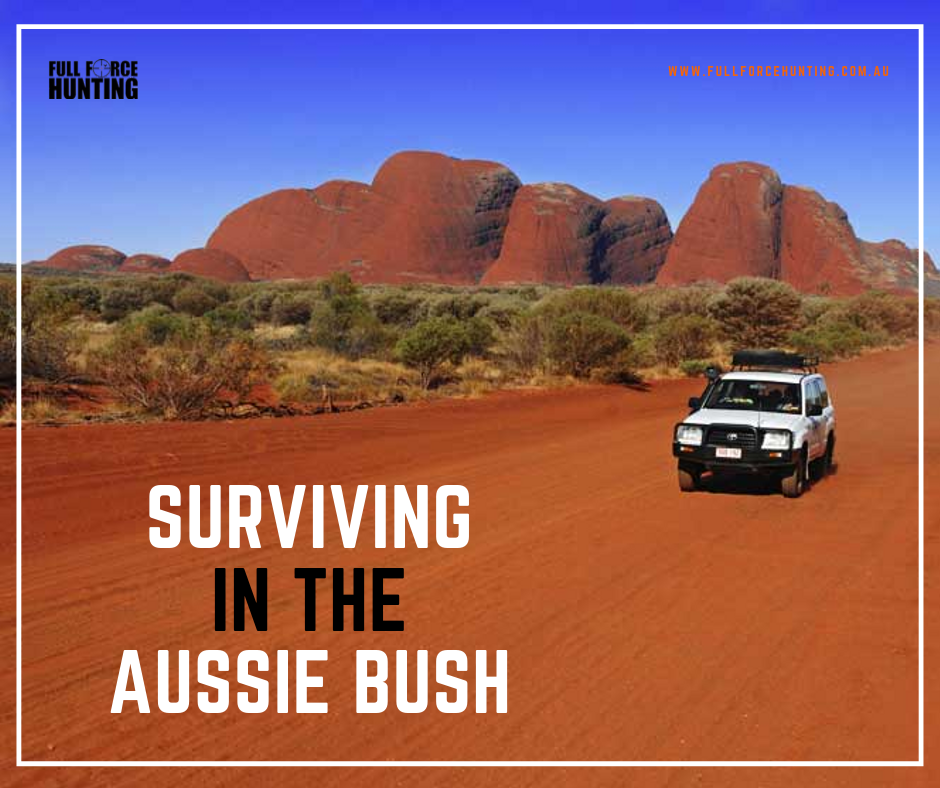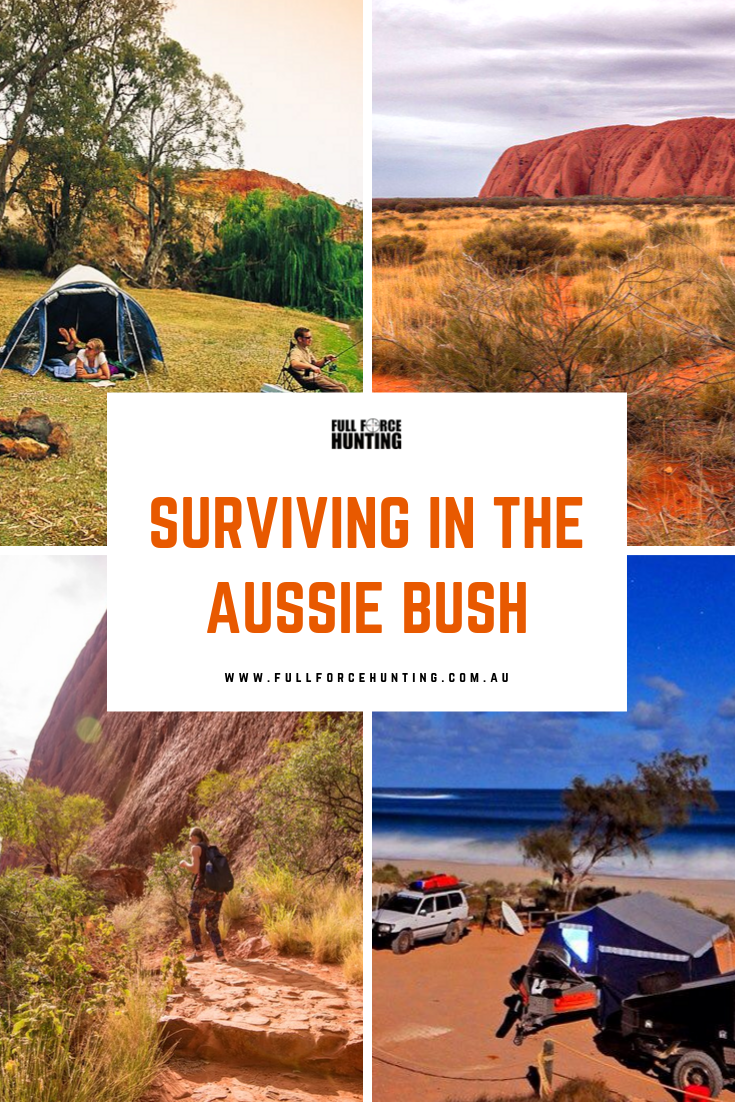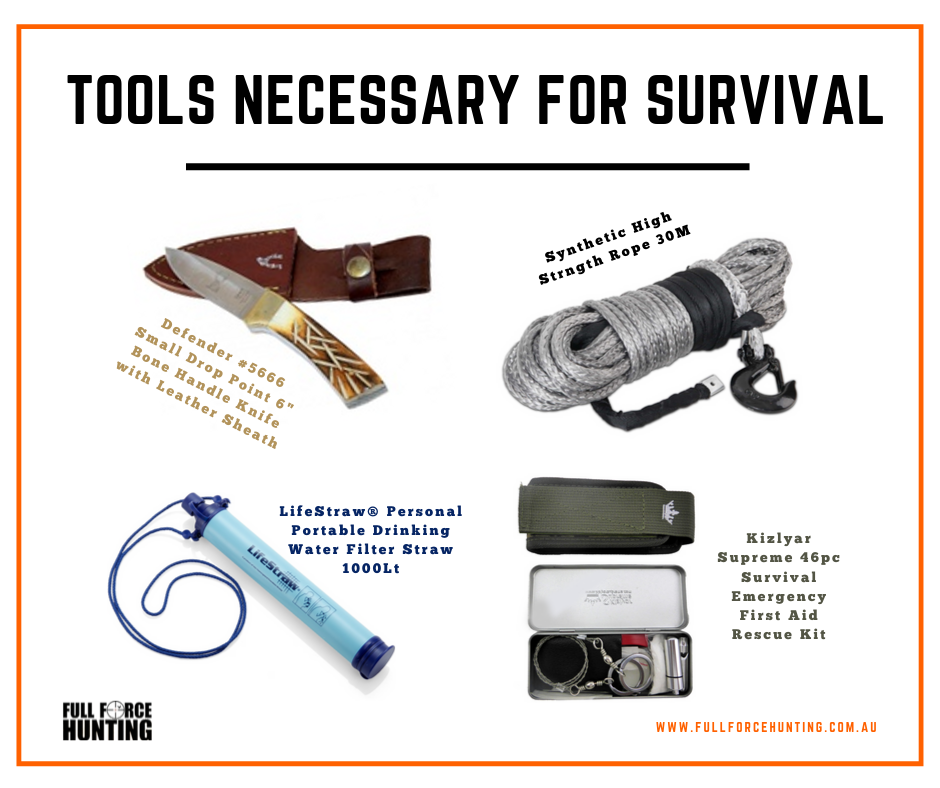Surviving in the Australian Bush – Essentials for an Emergency

When things go wrong in the bush, staying alive shouldn’t be a matter of luck; it should be about knowledge. Travellers venturing into the Australian outback should always tell someone where they going, take plenty of water and stay calm in the event of an accident. Use common sense when exploring like sticking to the tracks and keeping track of sign posts. Knowing basic navigation techniques will also be helpful such as how to use a compass or how to find North without a compass. A compass will help you find your way to civilization. If you have a map of the area you will be camping at, it will be even more helpful. You will be able to find a road or other sign of home on the map that you can get to by navigating with your compass.
Your 3 essentials for survival are Shelter, Water and Fire. These are the 3 things you will need for immediate survival.
These should be prioritised according to your situation and surroundings ie; If it’s raining concentrate on finding shelter and building a fire. If it’s hot, concentrate on finding water and shelter. Remembering that the sun rises in east and sets in the west and so does the moon, will increase your chances of survival.

Setting up shelter:
If there is a chance you might have to spend the night in the bush, building shelter is the most important thing to do. It will protect you from extreme weather conditions. Find a tree or a rock tall enough for you to use as the base of your shelter and use larger pieces of wood to build a skeletal structure. It is important to windproof your shelter with fully-leaved branches. When building a shelter look for any natural formations or materials that will help you or make things easier ie; a rock overhang or a fallen tree trunk – conserving energy is paramount.
Stay out of the sun. Unnecessary exposure to the sun will cause valuable fluid loss from your body. It is best to do as little as possible in the sunlight hours and save any real work for the cooler hours.
Finding water:
Ration your drinking water. Water is high priority in survival situations. If you've prepared before setting out on your journey you should have some water with you, ration what you have to make it last. On average a person needs around 2.5 litres a day, depending on the climate where lost and the amount of physical exertion. But always take as much water with you as you can carry. We recommend carrying a lifestraw with you at all times to help you with water.
Never drink any water found in nature without first treating it, either by boiling, using a portable water filter or UV sterilisation (by the sun). An example of UV sterilisation is to fill a clear (not coloured) water bottle and place it in the direct sunlight for at least 3 hours which will allow the suns UV rays to sterilise the water and make it safe for drink.
If you haven’t got any water don’t eat because it takes water to digest food, and you can die of dehydration. You can survive for 3 weeks without food.
Food
If you are stuck out there for more than a few hours, you are going to start to get hungry. However, as you can see by the rule of threes, food is actually a very low priority when it comes to short-term wilderness survival. Often one of the first things people stress about is where they can find something to eat — when there are many other things much more worthy of thinking about and spending time on.
Things you really want with you in a survival situation:
- Knife
The number one most important thing to bring is a knife. They have so many uses in every day camp activities and life in general. If you find yourself in a survival situation, your chances of survival are infinitely increased with a knife. I always have a pocket knife on me for everyday use and camping.
Fixed blade knives are ideal. They are more durable and resilient than folding knives as they do not have mechanical movement. They are also better for cutting large objects such as branches. Folding knives are great for a backup and less demanding tasks.
- Rope
Rope is also useful for camping, especially if you find yourself in a survival situation.
A good choice is paracord. It's lightweight, strong, and takes up little space. I am always wearing a paracord bracelet and usually bring an extra one camping, in addition to a large length of unused paracord. My extra bracelet has a side release buckle which makes it easy to attach to a strap on my pack.
One neat property of paracord is how it lengthens when wet. This is useful when you need a tight hold on something. Get it wet, then secure the object. When the cord dries, it will tighten. This is great for making grips on walking sticks and fixed bladed knives.
- Lifestraw
Removes bacteria, parasites and microplastics. It is the ultimate survival tool, has no shelf life, is super easy to clean and store and has been used and tested all over the globe
Use it to drink directly from streams and lakes, or fill up a container and use your LifeStraw to enjoy clean water on the go. The LifeStraw has unlimited shelf life and once opened can provide an individual with more than 5 years of safe drinking water.
- First Aid Kit
Basic survival first aid kits are one of the easiest to put together. Your first aid kit should be organised, properly stocked and available at all times. You have to understand how important it is to treat wounds that are sustained in a survival situation. Infection can be fatal during disaster situation and may cost you and your family’s survival so it is very important to properly tend any wounds ASAP.



